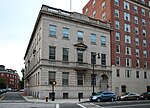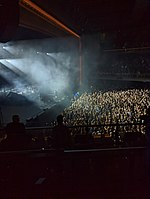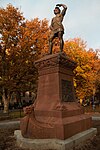Boston Arts Academy

Boston Arts Academy (BAA) in Boston, Massachusetts, USA is Boston's first and only high school for the visual and performing arts and is a partnership between Boston Public Schools and the ProArts Consortium. ProArts, a group of six arts colleges and universities in the Boston area, pushed the city to open the school, which was founded in 1998. The Consortium continues to support the school with performance space, music lessons and free college-level classes to BAA students.BAA won the John F. Kennedy Center for the Performing Arts, the National Schools of Distinction in Arts Education Award for the 2009–2010 school year from the Kennedy Center Alliance for Arts Education Network.Beginning July 1, 2018, construction of new facilities at 174 Ipswich Street commenced, leading to relocation of both Boston Arts Academy and the Boston Arts Academy Foundation.
Excerpt from the Wikipedia article Boston Arts Academy (License: CC BY-SA 3.0, Authors, Images).Boston Arts Academy
Private Alley 938, Boston Fenway / Kenmore
Geographical coordinates (GPS) Address Nearby Places Show on map
Geographical coordinates (GPS)
| Latitude | Longitude |
|---|---|
| N 42.3469 ° | E -71.0938 ° |
Address
Private Alley 938 1167
02115 Boston, Fenway / Kenmore
Massachusetts, United States
Open on Google Maps











